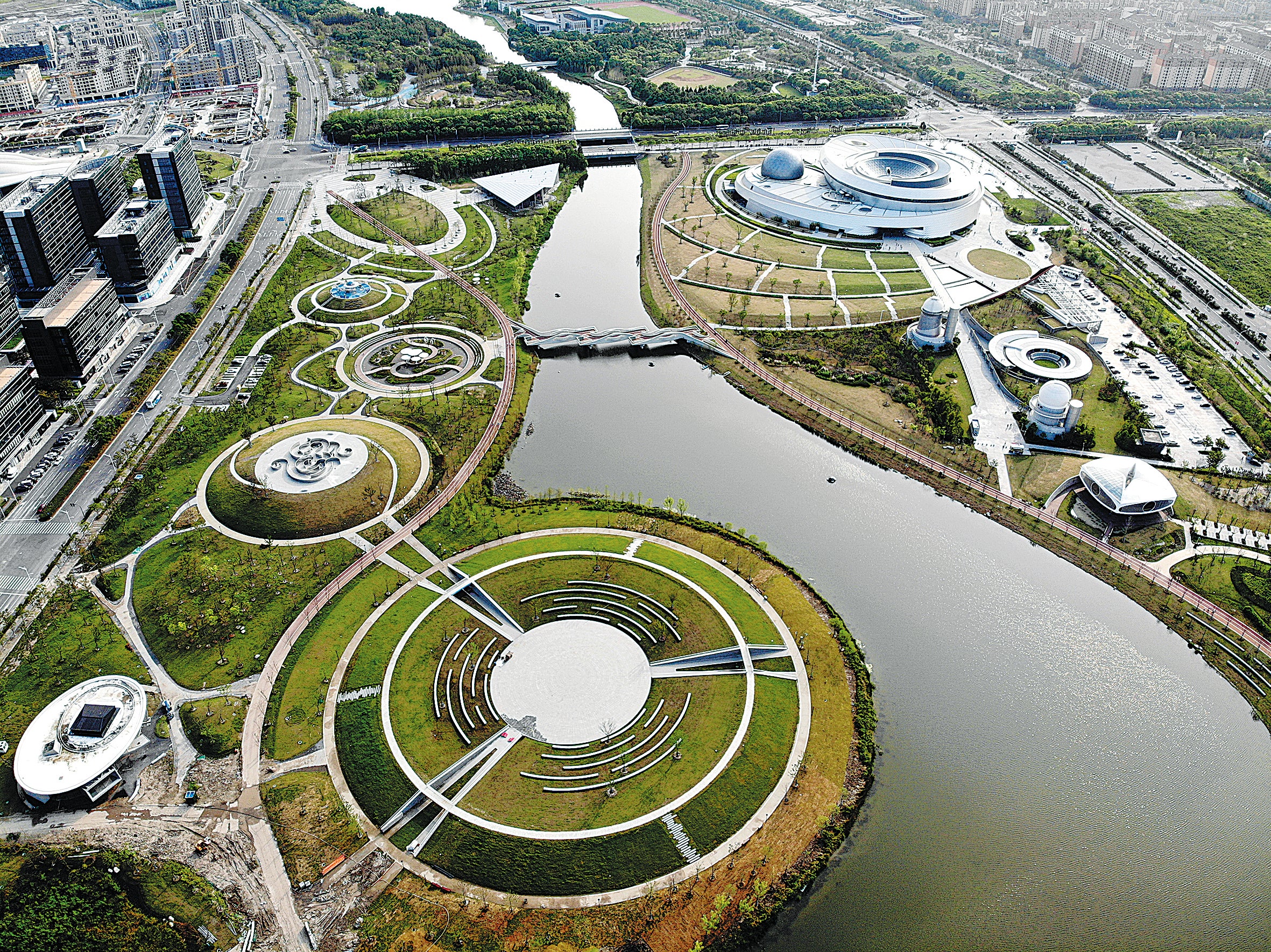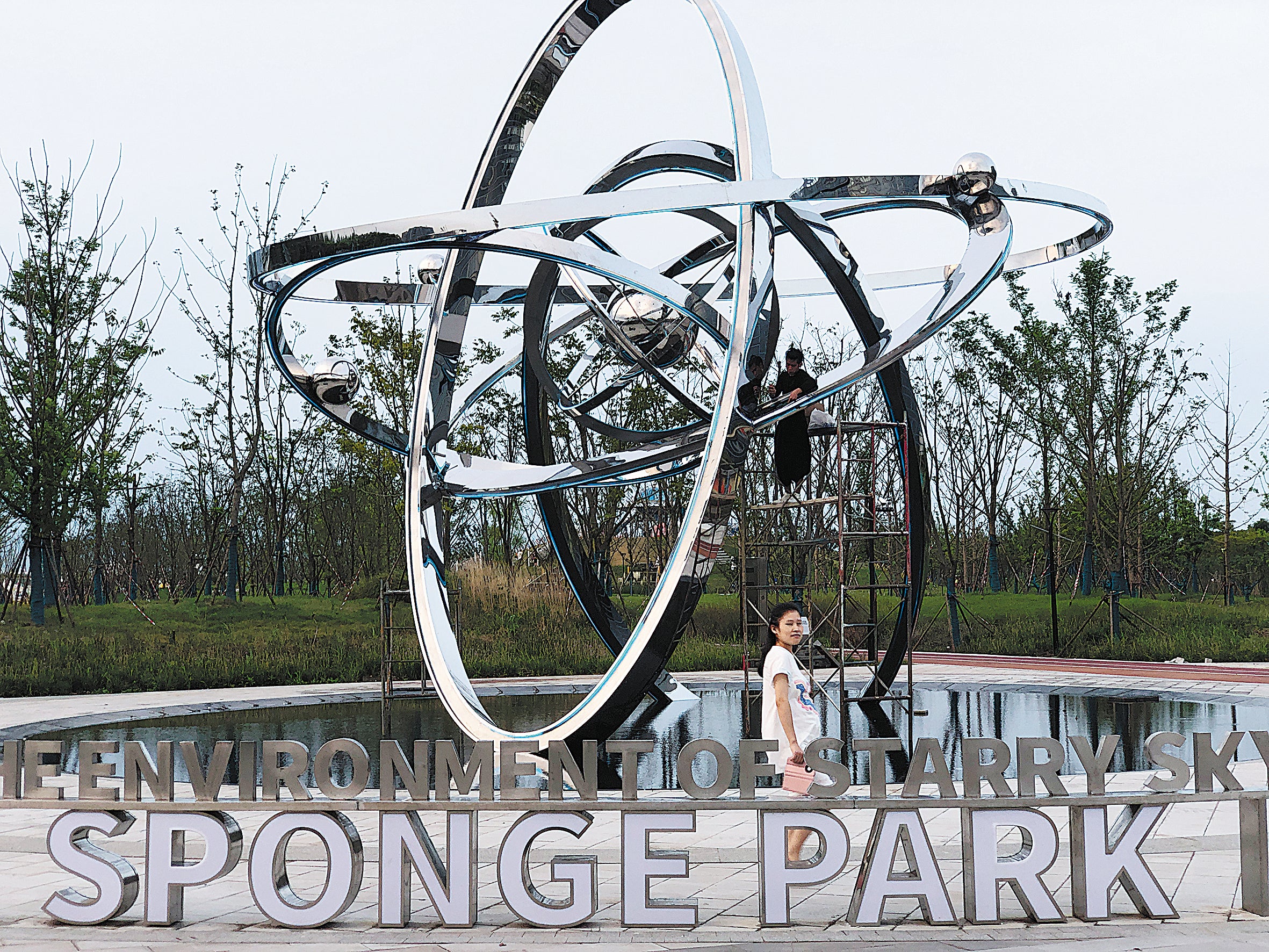Sponge that can soak up even the mess of a typhoon
THE ARTICLES ON THESE PAGES ARE PRODUCED BY CHINA DAILY, WHICH TAKES SOLE RESPONSIBILITY FOR THE CONTENTS

When Typhoon In-fa pelted Shanghai with heavy rains in July, Xu Jingxin was worried about the “sponge park” he had been working on for the past two years. The park, in the city’s Lingang area, gets its nickname from the ponds, gardens and a wetland connected by swales and designed to retain water in storms and prevent flooding.
Xu, an engineer with the China Construction Technology Consulting and in charge of building the sponge facilities, was concerned about whether what he had helped design could withstand the test of intense rainfall brought by the typhoon.
“I went to check the site when Typhoon In-fa passed, and to my great relief there were very few pools of water on the ground,” Xu says. “The system worked well.”
The park was built using permeable material that can absorb and channel water to underground storage units.
Flooding is one of the most serious water-related issues in Chinese cities because of rapid urbanisation and the disappearance of natural wetlands. Frequent extreme weather events caused by climate change have exacerbated the problem in recent years.
To cope with the problem the State Council launched the Sponge City pilot project in 2015, with the aim of having 80 per cent of urban areas refitted and embedded with sponge facilities by 2030 to absorb and reuse at least 70 per cent of rainwater. Thirty metropolises are part of the project.
Rui Dongliang, project manager of Shanghai Lingang New City Investment and Construction, has taken part in the construction of the 133-acre park since it began in 2019. Lingang was a model for the sponge city project in Shanghai, and the park an important part of it, he says.

In addition to retaining rainwater from runoffs, another aim is to clean and purify water through eco-engineering. The sponge park was intersected and divided into four parts by two rivers, the north-eastern section being a 24-acre wetland with several ponds and floating islands that forms a demonstration zone for the sponge system.
Xu says the water pumped into the park from the river first goes through a skimmer to remove surface debris before making its way into a pond to turn to sediment. The water then flows through several levels of filtration ponds with aquatic plants such as Vallisneria and water lilies.
“The system can purify up to 15,000 cubic metres of water per day, as the water quality rises from Grade V to Grade III when it flows back to the river,” Xu says, adding that the system is also connected with the rain drainage so it can treat the rainwater from surrounding areas.
Several floating islands of aquatic plants were added to clean the water in the river and serve as a natural habitat for birds. To extend the length of the shoreline so the river can slow down and be cleaned by the floating islands, bends were added to the once straight waterway. The sludge and silt excavated from the riverbed were then used to create landscapes such as little hills on the riverside.
The park, which opened to the public in August, is becoming a popular spot with residents of nearby areas because of its unique layout.
Previously published on Chinadaily.com.cn

Bookmark popover
Removed from bookmarks